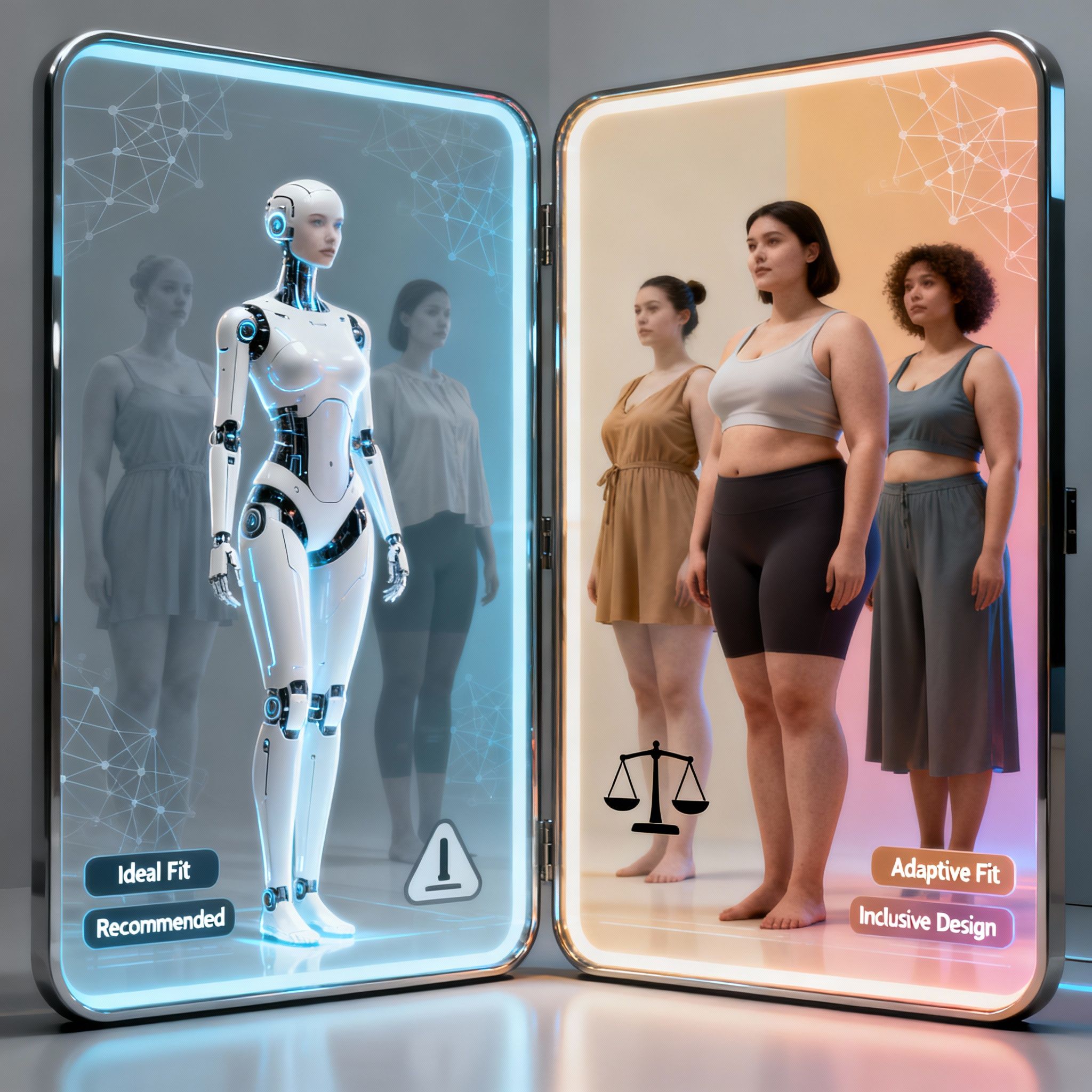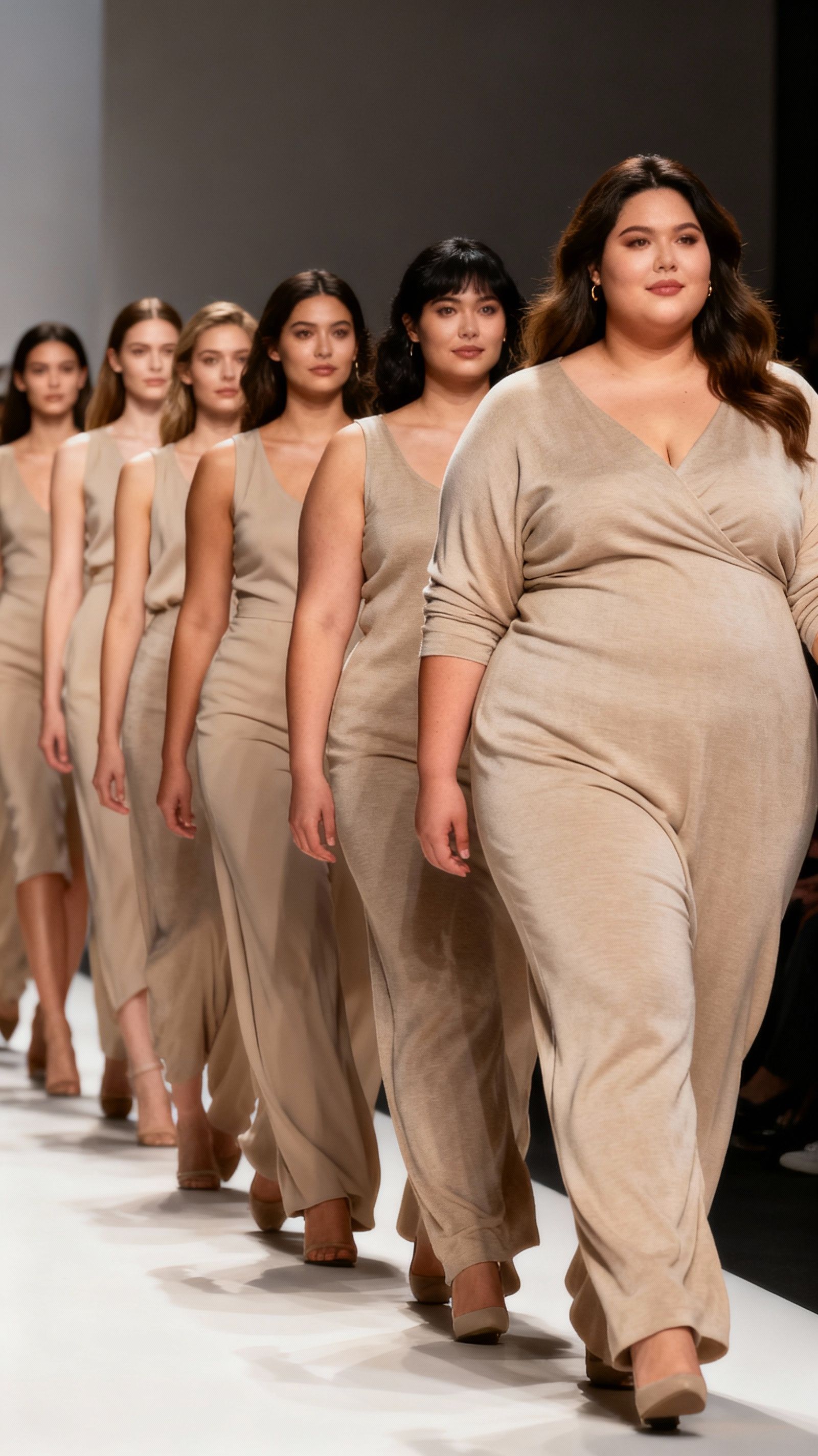AI Fashion Models From the Inside Out
AI Plus Size Fashion: Embracing Body Neutral Style


TL;DR
AI-powered styling still misses the mark for plus-size bodies and the body neutral movement; it often treats size diversity as an add-on, not a core design principle. With platforms like Glance shaping the future of inclusive shopping, there’s a real opportunity to build an AI ecosystem that respects curve identities, non-binary fashion, and true body autonomy.
Reclaiming Fashion Through Fat Liberation
When we talk about the body neutral movement, we mean a cultural shift away from celebrating bodies conditionally and instead toward simply accepting “this body, this moment.” But what happens when we layer on ai plus size fashion, promising hyper-personalization, inclusive sizing and effortless shopping? The truth is: many of these tools still misread, misrepresent or sideline plus-size bodies. Despite the tech hype around inclusive design, the real lived experiences of larger bodies and diverse identities are too often treated as an afterthought.
In a Gen Z world where non-binary fashion, fluid identities and size diversity matter more than ever, platforms like Glance have the chance to reshape the rules yet they must confront ingrained bias to truly succeed.
The Promise — and the Problem — of AI Plus Size Fashion
AI plus size fashion was supposed to be a breakthrough. Machine learning could help tailor fits, recommend flattering silhouettes, and democratize access to stylish, comfortable clothes. But as it stands, many systems treat “plus size” as just another category, not a lived experience.
- Stereotyped data inputs: AI models often learn from limited datasets with biased sizing samples.
- Size-first, not person-first: Algorithms recommend based on broad size buckets instead of unique body shape, posture, or movement.
- Lack of freedom in styling: Many plus-size AI recommendations stick to “safe” styles, looser cuts, dark colors missing the bold creativity of fat liberation.
Few AI styling systems truly capture the heart of the body neutral movement, which argues that bodies regardless of size should be treated with the same respect, fashion potential, and design ambition.
Why Body Neutral Movement Matters in AI Fashion

The body neutral movement emphasizes accepting all bodies without forcing positivity or hyper-idealization. It’s about design and fashion meeting people where they are not trying to “fix” or “flatter” them according to narrow norms.
- In the U.S., consumers continue to demand better plus-size options.
- Yet, top-tier runway inclusion lags: according to recent reports, less than 1% of runway looks at major shows were plus size.
- When AI plus size fashion systems focus only on “plus = loose or baggy,” they erase expression. They ignore that plus-size people also want structured cuts, vibrant prints, and trend-forward aesthetics hallmarks of Body neutrality.
Did you know? In 2010, Lane Bryant launched the “Plus Is Equal” campaign, one of the first major U.S. brand initiatives explicitly celebrating plus-size women as equals in style and fashion.
Where AI Still Gets It Wrong — Real-Life Frustrations
Here are some of the key friction points in the current landscape of ai plus size fashion, especially in relation to fat liberation and body neutrality:
- Limited dataset representation: Many AI models are trained on images of thinner bodies or “straight-size plus,” so they fail to understand more expansive or non-linear body shapes.
- Fit issues: Without robust 3D or behavioral modeling, plus-size fits suggested by AI can still be off leading to returns, discomfort, or unwearable options.
- Color and design bias: Algorithms may avoid recommending bold designs for larger sizes, reinforcing stereotype-driven “safe” design norms.
- Lack of feedback loop: If a user rejects a recommendation, many systems don’t ask why. Is it a fit issue? A style issue? A value issue?
These gaps matter deeply because fashion for fat liberation requires more than size: it demands respect, choice, and emotional connection.
How Glance Fits Into the Liberation Conversation
Platforms like Glance have immense potential. While Glance is not exclusively a plus-size tool, its approach to AI plus size fashion can help push the conversation forward.
- Glance tracks behavioral signals (dwell time, swipes, engagement) rather than rigid size brackets. This means its recommendations can learn what you actually like, not what a label presumes.
- By combining these signals with style archetypes and real-time context, Glance’s engine could surface more liberated style options structured blazers, expressive prints, or fluid silhouettes all of which encourage Body neutrality.
- Glance’s mobile-first design also means users of any size can discover and experiment with fashion without relying on limited plus-size collections or graded-down styles.
That said, there’s still work to be done: AI models must be trained on more inclusive and diverse datasets (in shape, not just size), and feedback systems must actively solicit why a plus-size user rejects a look to improve future suggestions.
Reimagining AI Plus Size Fashion Through Liberation Lenses

How can AI plus size fashion evolve to truly support fat liberation and the body neutral movement?
- Inclusive dataset building: Collect and use data from a wide range of body shapes, sizes, and styles not just size “buckets.”
- Emotion-aware algorithms: Train AI not just on size, but on comfort, confidence, and mood so stylistic recommendations honor individuality.
- Style innovation, not safety: Encourage AI to suggest bold design options (tailored cuts, bold prints) for plus-size users, rather than defaulting to “safe” fits.
- Feedback-driven machine learning: When users reject recommendations, ask why and learn from that feedback loop.
- Community participation: Empower plus-size and fat-liberated individuals to help co-design and test AI systems, ensuring they reflect real needs and aesthetics.
The Broader Impact: Liberation Beyond Size
When AI gets plus size fashion right in a way that aligns with the body neutral movement it does more than sell clothes. It:
- Validates identities rather than categories
- Amplifies liberated style, not uniformity
- Reduces shame and the pressure to “fit in”
- Opens doors for design innovation that centers every body
This isn’t just about expanding size charts; it’s about rethinking what fashion means. For true fat liberation, AI must be a tool for expression, not just inclusion.
Conclusion
AI plus size fashion holds promise: it could democratize design, improve fit, and celebrate body diversity. But if it clings to outdated size categories rather than embracing the body neutral movement, it risks perpetuating the very limitations it claims to dismantle. Platforms like Glance are uniquely positioned to bridge that gap blending data with dignity, style with substance. For fat liberation to be more than a market trend, fashion tech must evolve not just in scale, but in soul.
FAQs
Q1: What do we mean by “ai plus size fashion”?
AI plus size fashion refers to artificial intelligence–driven tools and algorithms that recommend, design, or generate clothing specifically for plus-size bodies.
Q2: What is the body neutral movement?
The body neutral movement emphasizes accepting and respecting all bodies without forcing positivity. It’s about functionality, freedom, and self-acceptance, not celebrating or criticizing.
Q3: Why is AI not always good at creating plus-size fashion?
Many AI systems rely on limited data from standard or semi-plus sizes. They can default to simple or stereotypical styling, missing the nuance of shape diversity, mood, or personal preference.
Q4: How can fashion platforms like Glance support fat liberation?
Glance can use behavioral data (how long you pause, swipe, revisit) to learn your style offering looks that prioritize comfort, expression, and choice, not just size.
Q5: Is there a real market for plus-size fashion in the U.S.?
Yes. According to Statista, the U.S. women’s inclusive sizing apparel market is valued at US$ 12.7 billion.






